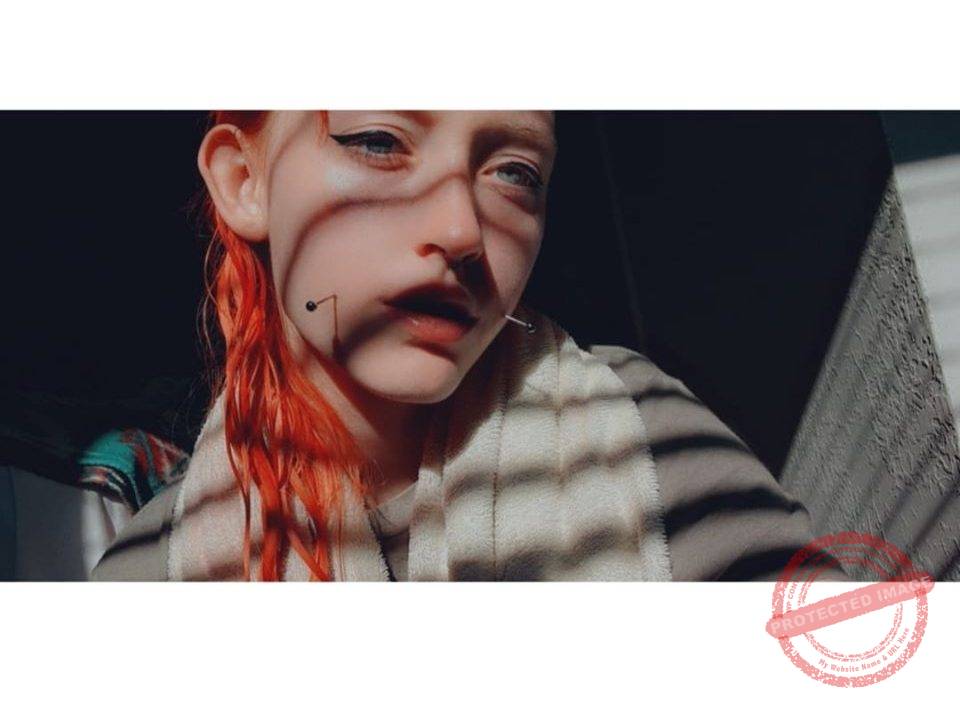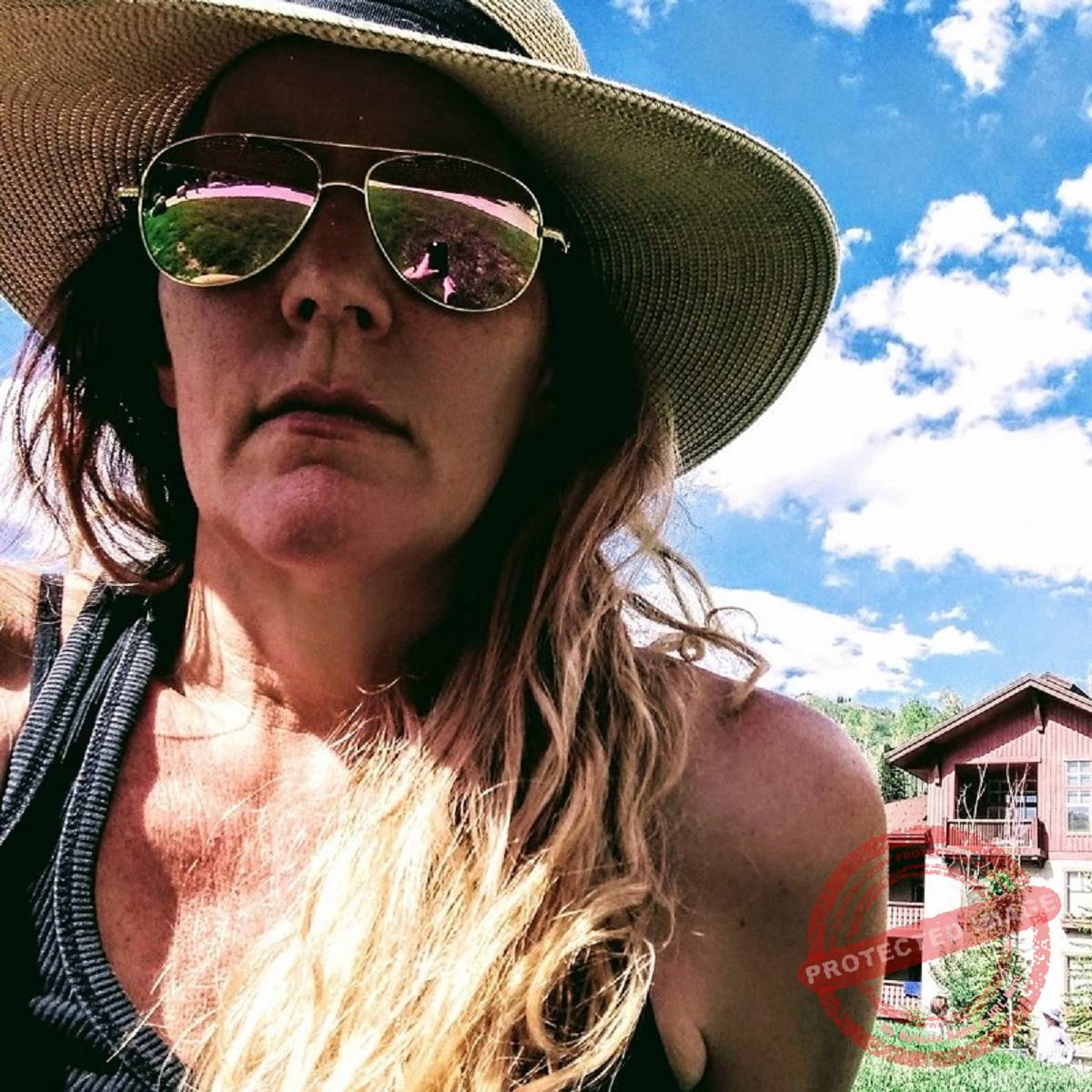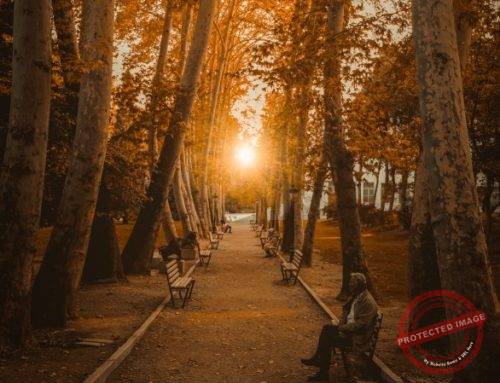
Unintentional self-portrait by A. Forrest
Something to Live For.
How I’m Managing Suicidal Ideation
by Linda Forrest
I don’t have suicidal ideation, my daughter does. Two days ago, she swallowed a bottle of her anti-depressants because it seemed like the only real solution to her pain. I’m not an expert in psychology, I work as a muse, so this article is written from the perspective of a mother and of a person who works in the field of inspiration.
I am not speaking from my child’s voice. She has her own voice. I am speaking from the perspective of the pain I see in her and from my professional opinion – as a muse – on the healthiest way to respond to that pain.
“Don’t say I have something to live for. Give me something to live for.“
My daughter is eighteen and she, like many in her generation, tend to appear a bit ambivalent. I can’t blame them, the world we’ve created for them is overwhelming and often uninspired. The youth of today have high expectations of themselves and of the world and they should. They are the real change-makers. We’ve all made an impact. Our world is better than it has ever been in so many ways and it’s worse too. This is the nature of change. No one generation is going to get everything right. We’ve done our fair share of good things, but we’ve created problems too.
How many of you – over the age of twenty-five – look at the world and see it as a bit of a tragedy? How many are afraid of the violence or overwhelmed by the choices of our governments? How many are concerned about the somewhat devastating news of what’s been happening to the food we put in our bodies or the offenses of those who dismiss other humans because of race, gender, age or any other potential for discrimination? What about sex trafficking, torture, child abuse? Heartbreakingly, the list goes on.
Do you feel the pain of sometimes looking at a world that seems impossible to fix? Imagine being the generation who not only feels the inspiration to make a difference but also the direct burden of it. This newest generation is not just aware of the pain, they are buried in it.
To then approach them when the pain or the responsibility has become too much and tell them they have ‘something to live for’ is to suggest we aren’t seeing them. The world isn’t necessarily giving them a lot to live for right now, especially if they live in an environment that buries them in the responsibility to change it.
I can’t take my daughter’s pain away. I can’t tell her the world it a perfect place or that she should see inspiration in it. What I can do is help her figure out what’s worth it for her. I can’t pull her away from the bigger expectations of the world. I can only begin with “What makes you want to be alive today? What light’s a fire in your belly?”
Her immediate answer to this question was “Nothing. I have nothing to live for,” but as we continued to seek, we found helping dogs with behavioral problems and we found Shaolin Kempo. We reconnected with a few things from her past and we found a future in them. We found something to work toward.
It’s not everything and we’re nowhere near the finish line, but the answer for me is:
If I don’t want her to give up on life, I can’t give up on her.
“Don’t give me pressure about the pain I’ll cause others. I already feel little value.”
I can’t even imagine telling my daughter what it would do to my soul if she died, not just because of the loss of the magnificent light she brings to my life, but by the realization that she couldn’t find some spark of light in the world, because she couldn’t see what a truly inspiring place the world can be.
It’s true, the world can seem dark, but it’s bright too, brighter than it’s ever been. Every new generation of possibilities makes it better and I would hate to know she didn’t get a chance to see it. I would also hate to think she died feeling that no one saw it in her.
I’ve made a lot of mistakes as a parent, the worst of these being corrective instruction. There are so many times I thought I was giving direction when what I was really doing was telling her at some level she was failing. I was trying to make it better, but I was making it worse.
I’m not going to beat myself up or blame myself for this situation. I’ve played my part, but if I focus there, I just become another level of burden to her. The better thing – I think – is to remember how inherently valuable both of us are.
I’m not giving her any pressure to live for me. I am being honest about my fear and I am talking about my desire for her to live, but I am not making it her responsibility to live. She’s so young and she’s in pain and at this moment, I think I’m finally being the parent I always wanted to be. I’m telling her I think she’s amazing and I’m here for her. That’s it. I’m not here to help her “get life right.” I’m not here to fix her or treat suicidal ideation like a failure. I’m here to tell her I believe in her and whatever direction she wants to take in this, I have faith in her ability to lead us through this process.
She’s telling me what she needs me to do for her and I’m doing it. Sometimes it’s hard. Sometimes I think I have a better solution. Sometimes I struggle, but I can’t tell her she is strong enough to do this if I don’t treat her like she is strong enough to do this.
“Don’t worry about why I’m doing it. Help me decide what to do next.”
There’s really only one reason anyone wants to die. It’s a brain chemical and it’s unpredictable and it’s complicated. Our thoughts – even those of suicidal ideation – are clusters of neurons, neurons that are absolutely sure their thinking is correct. To attempt to understand thoughts of death is a near impossibility and it becomes a rabbit hole that can actually stimulate reoccurrences more than eliminate them.
The better thing to do is to look forward. My daughter and I have a single focus, what step do we take next? What step takes us forward,, toward a life worth living? This is not a moment we are dealing with. Suicidal ideation is a condition that takes time to heal, time that teeters on a precarious edge, a terrifying edge but we’re not going to fix it in one conversation and we’re not going to fix it all at once.
There are so many other painful sentences I see in her right now. I could probably write a book of them, but that’s not my point. I’m not here to get bogged down in the absolute agony of what suicidal depression is. I’m turning my face to the sun and I’m listening to her pain from as bright a perspective as I can because I want to bring that sun to her. I want to help her find a brighter day and my place in this is to let her teach me how to do that.
We’ll walk this journey together, moment by moment, decision by decision – her decisions, not mine – and we’ll find our way out of this dark place together.
If you’re out there and you’re alone, you can still do this. There are free videos and exercises available on my website, with more to come. Read articles, do practices, find something that makes your life worth living. It doesn’t need to be something huge, just a little thing every day that makes it worth it. Build on the small things and you’ll trigger the big things that make life not just a thing to tolerate, but a thing to enjoy.

Linda Forrest
At 23, Linda Forrest refused the definition of incurable when she was diagnosed and medicated for severe PTSD and addiction. On that day, she began a study that would eventually result in her discovery of a cure.
Through over 30 years of diverse research combining the sciences of psychology, pharmacology, neurology, and spontaneous healing, she assembled a puzzle that cured her condition. She now mentors others and has helped thousands discover what it means to live a life free of suffering.
As an author, speaker, muse, and mentor, she continues to explore what it means to be human by asking what becomes possible when we finally evolve beyond primal brain functions to eliminate fight-or-flight triggers.
To find out more about her and her journey, visit lindaforrest.com







I am so grateful for what we know about the brain. The effect of living life without ‘a reason for being’ can be absolutely devastating. Both Nasa and several branches of the military are using this understanding to prevent and treat PTSD, but the same is true for all of us.
This happened to Anna in a very subtle way. Leaving martial arts after being told she wasn’t able to be part of the Academy anymore and then moving from rescuing dogs to just babysitting them, she lost all of the chemistry inherent to living a successful contributing life.
I heard a quote from Tony Robbins today. He said, “Only growth and contribution will give you fulfillment.” I wholeheartedly believe this. We need to both challenge our mind, reaching for something and we need to contribute to the bettering of all life. When we do these things, health and well-being naturally follow.
Anna and I have taken advantage of this moment to reconnect with those things that make her thrive. She is happy and engaged again and we’re planning for a bright, successful future.
I think this is important for all of us. We need to give both to ourselves and to the world. When we do this in the right way, with the right reasons, life is fulfilling.
I hope everyone has a beautiful holiday and I hope the thing you are most grateful for is you. <3